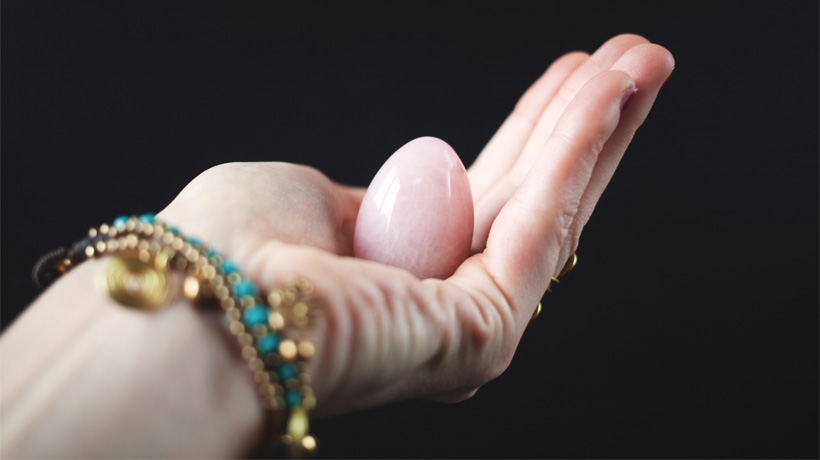If you’ve been paying attention to the news lately, you’ve probably seen the vagina horror stories dominating headlines. Thanks to alternative medicine trends perpetuated by celebrity-owned health and wellness brands, women are now using more unconventional methods to “heal” their vagina than ever before.
Now we’re not saying that all alternative approaches to medicine are hoaxes. But maybe the ones that leave you with second-degree burns (hello vaginal steaming) should be examined a little closer before they’re attempted. Lucky for you, we’ve perused the information available on the web and created a list of five products an expert says should never see the inside of your hoo-ha.
Garlic
Following the dangerous trend of vaginal steaming, garlic has gained popularity as a way to treat a vaginal yeast infection. It seems that the trend can be traced back to 2003, where an article in Midwifery Today magazine touted the herb as an overnight cure to a bacterial infection.
In a post on Twitter, San Francisco-based OB/GYN and infamous debunker of celebrity health trends Jen Gunter wrote in all caps, “I shouldn’t have to say this in 2019, but here we are.” Gunter then proceeds to explain that while garlic does contain allicin, a compound that typically has antifungal properties in lab settings, you’re unlikely to see the same anti-yeast effect in your vagina.
“For allicin to be released the garlic has to be cut or crushed,” she writes. She also adds, “Garlic could [also] have bacteria from the soil. Bacteria from the soil can be pathogenic – bad for the body.”
Creams that claim to “lighten” or “condition” the vagina
A couple of years back, Khloé Kardashian wrote on her website about the benefits of putting vitamin E oil in and around the vagina. Many Kardashian fans were then quick to race to stores and buy vaginal creams containing vitamin E that promised to “add some extra prettiness to the V” (a real quote from Scandinavian brand Shades of V’s Vaginal Luminizer).
“As this product claims it can brighten the appearance of the skin, [it] could have a depigmentation agent which has a real potential to cause irritation. Stay clear,” Gunter writes on her blog.
Japanese vagina stick
If you haven’t heard of this one, then there’s just one thing you need to know: don’t try it. These sticks are made up of ground-up plants, herbs, and other mystery substances that promise to tighten your vagina after just a couple of minutes of use. They also claim to help eliminate vaginal discharge, and one bold brand asserts that their sticks will make you “feel wanted again.” Yikes.
“The chemicals or trauma temporarily reduce vaginal moisture,” writes Gunter in a blog post. “The lack of wetness and pain from the resulting abrasions may also cause the pelvic floor to spasm during sex (not in a good way) and this will tighten the vaginal opening (which can make insertion painful).” She also notes that methods like this that dry the vagina and increase the risk for sexually transmitted diseases.
Vicks VapoRub
No longer just a cure for the aches and pains caused by the common cold, many women are now using Vicks VapoRub to apparently clean their vagina, boost their sex lives, and keep it smelling fresh down there. Here’s why that’s wrong:
“Many of these ingredients are irritants and sensitizers and are most definitely NOT for mucosal surfaces,” writes Jen Gunter in a post on her blog. Gunter believes that if you do in fact try this method, you won’t get very far.
“The irritation alone would prevent anyone from actually using it,” Gunter writes.
Jade eggs
These glorified rocks have been praised by certain wellness brands as an “ancient Chinese secret” that helps increase your sexual pleasure, strengthen your pelvic floor muscles, and heighten your feminine energy. But these jade eggs aren’t worth it, and it’s not just because they carry a pretty hefty price tag for being so small.
“Jade is porous, which could allow bacteria to get inside [the vagina], and so the egg could act like a fomite. This is not good, in case you were wondering,” Gunter wrote in a blog post.
Gunter writes that jade eggs “could be a risk factor for bacterial vaginosis or even the potentially deadly toxic shock syndrome.”
Now that you’re aware of these five things that shouldn’t go anywhere near your vagina, we hope you can find other (scientifically-approved) ways to keep your vagina happy and healthy. And if you’re still bent on sticking something up there, consult your doctor first to make sure it’s safe.
Sources:
https://drjengunter.com/2017/12/30/what-you-shouldnt-put-in-your-vagina-2017s-greatest-hits/
https://midwiferytoday.com/mt-articles/garlic/
https://books.google.com/books?id=Y8K1oAEACAAJ&dq=sex+rx&hl=en&sa=X&ved=2ahUKEwj_vYnrj_7jAhWwmeAKHX0YDUEQ6AEwAHoECAAQAg
https://twitter.com/DrJenGunter/status/1120555749854281728?ref_src=twsrc%5Etfw%7Ctwcamp%5Etweetembed%7Ctwterm%5E1120555749854281728&ref_url=https%3A%2F%2Fwww.pajiba.com%2Fnews%2Fa-brief-list-of-things-you-shouldnt-insert-into-your-vagina.php
https://www.vaginal-tightening.com/wand/
https://drjengunter.com/2016/01/14/dont-use-a-japanese-vagina-stick-to-tighten-your-vagina-okay/
https://drjengunter.com/2017/01/17/dear-gwyneth-paltrow-im-a-gyn-and-your-vaginal-jade-eggs-are-a-bad-idea/
https://www.sccgov.org/sites/da/newsroom/newsreleases/Pages/NRA2018/Goop.aspx



